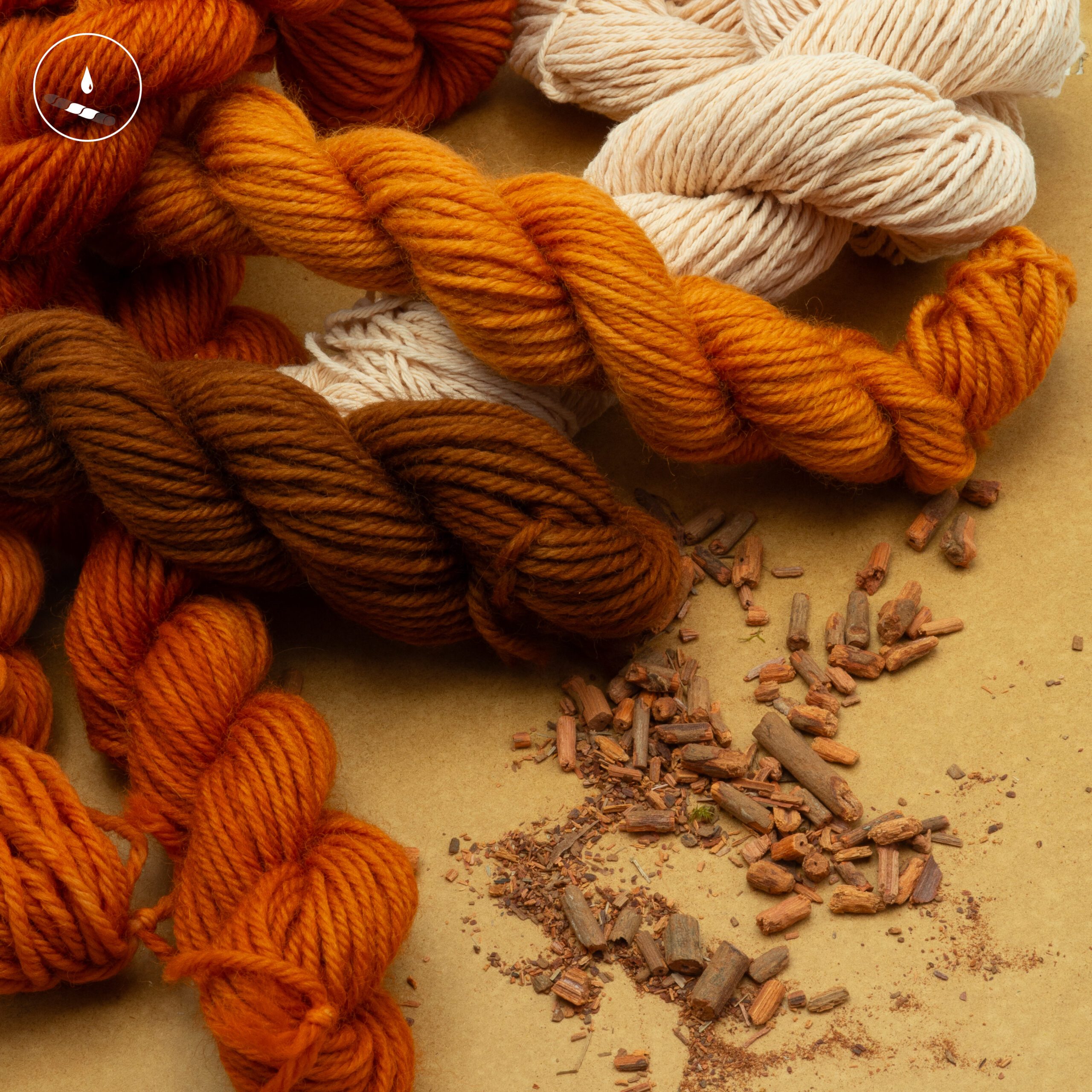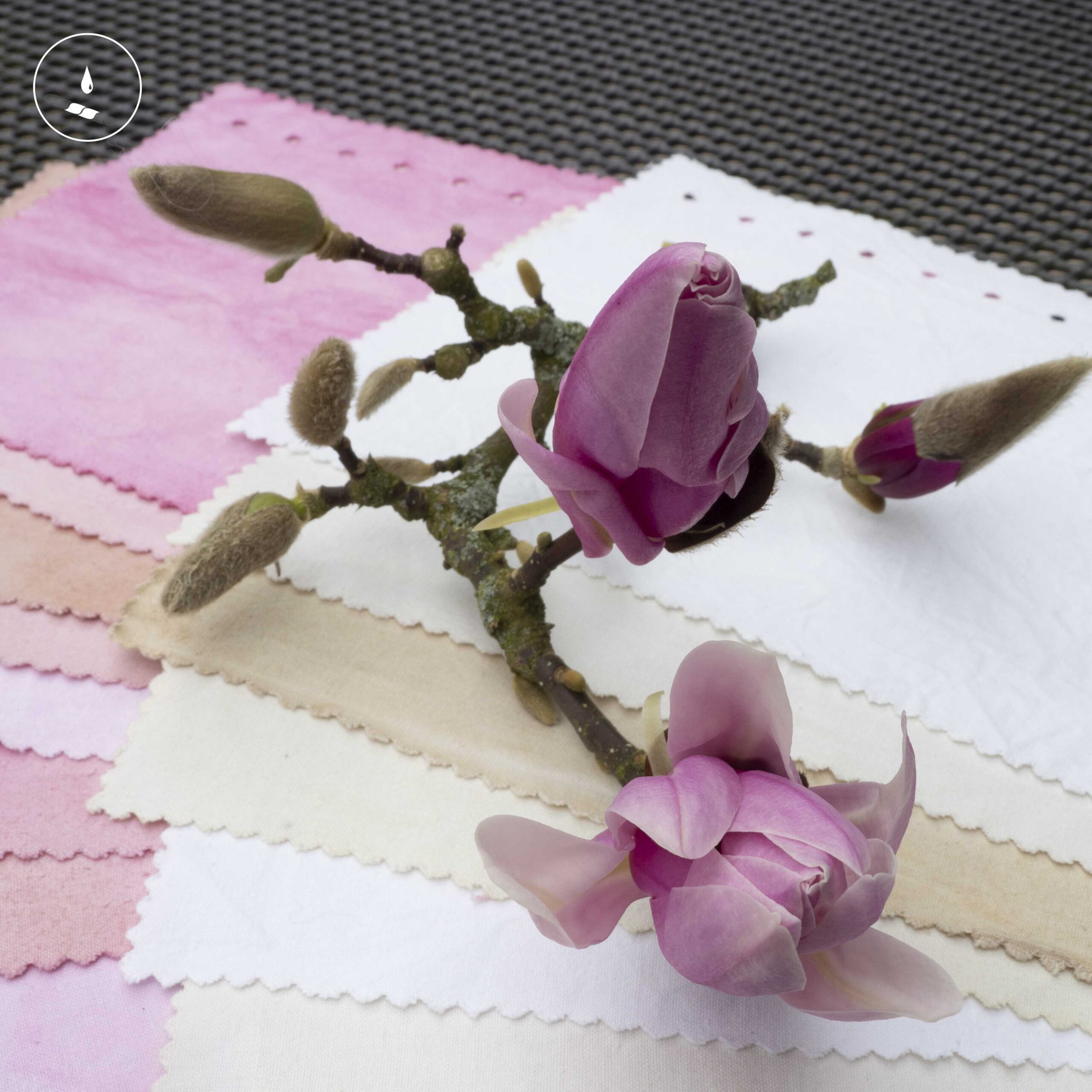Dyeing

Solar dyeing, snow dyeing, acid dyeing, natural dyeing… We’ve tested many dyeing techniques over the years. What would you like to know about textile dyeing?

Mushroom dyeing
A new challenge
What mushrooms can you dye with?
There are thousands of different mushroom species and many of those give off colour. This article is a brief introduction to mushroom dyeing and includes a detailed explanation on how to dye using dyer’s polypore.

Break your dyes
For a unique result
Colour breaking
Any dye that consists of multiple pigments can theoretically break, either accidentally or on purpose. We’ve tried different techniques with which you can use this effect to your advantage.

Dye fibre in a bag
Yarn dyeing made easy
Dyeing with residual heat
If you’d like to save electricity and time, this is the article you need! Dye yarn, fibre or fabric in a cooking bag or haybox to make dyeing easy and quick! Less work, great results. Read all about it in the article in magazine 7.

Making Turkish red
And other uses for madder
Madder
Turkish red is an example of the many uses of madder. This plant has a rich history and was grown for hundreds of years in Zeeland in the Netherlands. It’s a dye with multiple purposes: use it to dye brown, orange, red and even purple.

Calculate your dye colour
With a computer
Computer assisted dyeing
You can use a computer to extract the CMYK makeup of the colour you’re looking for. With information, you can dye the colour you’re after on fabric, yarn or fibre.

Dyeing plant fibres
With natural dyes
How to mordant cotton
Do you know the difference between alum, aluminium acetate and aluminium lactate? These are all aluminium based chemicals that help you prepare cotton fibres for natural dyeing. Learn all about how to work with these materials in this article.

Design your own fabric
Or upcycle your old clothes
Printing fabric with stamps
Use stamps and various different types of dyes to turn plain fabric and clothing into gorgeous and interesting designs!

Recolour your fibres
Without adding new dye
Natural dyeing with colour modifiers
Shift and change up your naturally dyed colours by using different treatments! Use acid, alkaline, copper or iron to revive your faded logwood scarf or change a colour you don’t like to one you love!

Overdyeing yarn
Fixing mistakes
Re-dyeing already dyed yarn
Not every dye experiment works out well, or perhaps you own some yarn you’re not too fond of. The answer is simple: dye it again! This article teaches you everything you need to know about overdyeing yarn.

Saint John’s wort
Dye half the rainbow with one plant
An unassuming dye plant
In many temperate regions of Europe and North America, this plant is classed as a weed, because it spreads easily and grows quickly. That’s fortunate for us, because this is an amazing dye plant! With the right techniques, you can dye multiple colours from one dye bath. Read all about it in our fourth magazine.

Is dyeing sustainable?
Environmentally friendly dyeing
Is sustainability important to you?
It is to us! We’ve taken a deep dive into this topic and researched the effects of commercial and home dyeing on the climate. This article contains a nuanced view of each aspect of dyeing and gives you tips on how to make your dyeing practice greener.

Dyeing self-striping yarn
For socks and more
Potato-chip knitting and weaving
Self-striping yarn is wonderful to work with: all the stripes you desire, without a ton of ends to weave in afterwards! But there is a bit of math involved. We’ve explained everything you need to know to dye your own striping yarns for socks and more.

Indigo blue
A dye that shaped the world
Blue, with historical roots
Indigo dyeing feels magical: your yarn comes yellow out of the dye bath and slowly turns blue while you’re watching. Read all about the dyeing techniques you can do with this pigment and how it’s changed the world as we know it today.

Solar-powered dyeing
With minimal equipment
Low-effort dyeing
On hot summer days, the last thing you want to do is stand at a stove, stirring a dye pot for hours on end. With this technique, you don’t have to! Dye beautiful colours with no electricity and very little work required.

Gradient dyeing
With natural dyes
Dyeing natural gradients
Dyeing colour changes is easy with acid dyes, but it can also be done with natural dye pigments! We’ve tested three different methods and shared our results in the first edition of Twisting Tales Magazine.

Colouring buttons
With natural dyes
Dye buttons to match
The perfect button for your project can be hard to find. But did you know that you can dye your own? Read all about dyeing buttons in our first magazine.

Cold weather dyeing
Using snow and ice
Take advantage of winter weather!
Whether you’re completely snowed in or whether there’s only a few specks on the ground: if you’ve got snow, it’s time to dye! This technique creates unique effects and colour blending.

Natural dyeing practice
Our method
Want to learn natural dyeing?
Learn how to prepare your dyestuff, mordant your materials and make your dye bath by reading our blog on natural dyeing. Good luck!
Twisting Tales Magazine
Editions available
-
 Twisting Tales Magazine no. 08Price range: €16,53 through €20,66 inc. VAT
Twisting Tales Magazine no. 08Price range: €16,53 through €20,66 inc. VAT -
 Twisting Tales Magazine no. 07Price range: €16,53 through €20,66 inc. VAT
Twisting Tales Magazine no. 07Price range: €16,53 through €20,66 inc. VAT -
 Twisting Tales Magazine no. 06Price range: €16,53 through €20,66 inc. VAT
Twisting Tales Magazine no. 06Price range: €16,53 through €20,66 inc. VAT -
 Twisting Tales Magazine no. 05Price range: €16,53 through €20,66 inc. VAT
Twisting Tales Magazine no. 05Price range: €16,53 through €20,66 inc. VAT -
 Twisting Tales Magazine No. 04Price range: €16,53 through €20,66 inc. VAT
Twisting Tales Magazine No. 04Price range: €16,53 through €20,66 inc. VAT -
 Twisting Tales Magazine No. 03Price range: €16,53 through €20,66 inc. VAT
Twisting Tales Magazine No. 03Price range: €16,53 through €20,66 inc. VAT -
 Twisting Tales Magazine No. 02Price range: €16,53 through €20,66 inc. VAT
Twisting Tales Magazine No. 02Price range: €16,53 through €20,66 inc. VAT -
 Twisting Tales Magazine No. 01Price range: €16,53 through €20,66 inc. VAT
Twisting Tales Magazine No. 01Price range: €16,53 through €20,66 inc. VAT
-
 Crochet Notebook€9,50 inc. VAT
Crochet Notebook€9,50 inc. VAT -
 Dyeing Notebook€9,50 inc. VAT
Dyeing Notebook€9,50 inc. VAT -
 Knitting Notebook€9,50 inc. VAT
Knitting Notebook€9,50 inc. VAT -
 Sewing Notebook€9,50 inc. VAT
Sewing Notebook€9,50 inc. VAT -
 Spinning Notebook€9,50 inc. VAT
Spinning Notebook€9,50 inc. VAT -
 Weaving Notebook€9,50 inc. VAT
Weaving Notebook€9,50 inc. VAT
